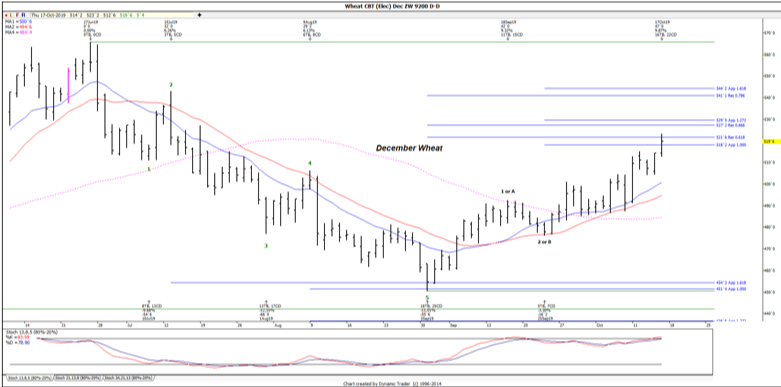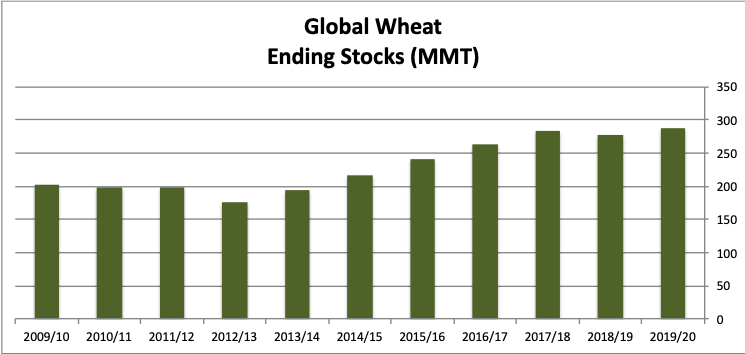By: Dan Hueber –
As the corn and soy markets began to tire this week, they evidently decided to pass the baton over to wheat to see if it could not extend this positive run. Thus far, it has done a pretty respectable job as we have now seen December futures extended into higher highs for the swing, reaching the loftiest level traded since mid-July. I suspect that the majority of the buying has been in the form of short-covering with the recognition that the recent winter weather in the Northern Plains made not be conducive to winter wheat and now with a return to more seasonal temperatures forecast for next week, flooding may become the next issue.
Of course, once you spark a shift in psychology, traders will tend to experience a “reawakening” in other factors that were already prevalent, i.e., a three-year drought in Australia and the news begins to feed on itself. Also, providing a little extra incentive this morning was the fact that Egypt paid $9 a tonne more than just a week ago for wheat from Russia, Ukraine, and France. The Saudi are also in for 600,000 wheat, which will most likely also come from those sources, but as they say, a rising tide will lift all boats. Do keep in mind that we are by no means at risk of running short of wheat on a global basis as if you recall, on the recent supply/demand estimate, the USDA raised the global ending stocks estimate by just over 1 MMT to a record 287.8 MMT. That said, a little over 50% of these stocks reside in China, so they are not quite as overwhelming as they would appear at first blush. Still, with solid crops in the EU, Russia, and Ukraine this year, it is difficult to think that prices will run away to the upside just yet.
The USDA has announced that in light of the recent winter weather, they intend to resurvey acreage in North Dakota and Minnesota for the November production report. The first reaction that comes to mind is, in light of the controversy surrounding the prevented plant acreage this year, why just stop with those two states, but I guess we will have to wait until January to see if that is addressed.
Tyson Foods has now made it official by announcing that as of February of 2020, it will no longer buy hogs that have been raised using the growth hormone ractopamine. It is estimated that 50% of the pigs raised domestically have this in their diets. JBS USA has already announced such as move, and while Smithfield will still process hogs that have been fed ractopamine, it does not use the product in any of its hog production facilities. This is obviously a move by these companies to try and capture a share of the Chinese import demand seeing that nation will not accept pork that has been fed this product. It will be interesting to see if we find good sales again when the weekly export sales are released tomorrow morning.
No official updates on the U.S./Chinese trade negotiations, but rumors are that Phase One is moving along. If all goes well, there is speculation that there will be a signing mid-November at the APEC Summit in Chile.
One final note on a topic I touched on yesterday. The U.S. Dollar has now extended lower for the third day in a row, with the potential Brexit deal announcement, adding addition sell incentive. This has pushed the dollar down to the lowest level traded since late August, and there appears to be a growing chorus of analysts that believe the breakdown has just begun.

